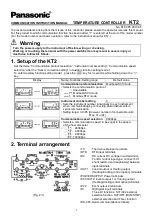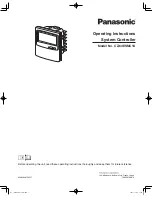
___________________________________________________________________________________________
EG3002F
7
SECTION 7 : TROUBLE SHOOTING
Fault Description
Possible Cause
Inspection (Fault Clearing) Actions
7.1 Starter
motor
engaged
but
engine will not
start
1. No electrical power 1. Confirm that Terminals 1 & 2 are connected to the genset
battery, have normal voltage, and that polarity is correct.
2. MPU fault (failed,
disconnected,
installation
incorrect)
2. Disconnect wires from Terminals 10 & 11. Measure the
resistance between the two wires. It must be between 10
–
1,000 Ω. If there is an open or short circuit then check whether
the wiring between MPU and the controller is open or shorted.
Directly measure the resistance of the MPU. It must be
between 10
– 1,000 Ω. If there is a short circuit or an open then
change the MPU.
Measure the resistance between each pin of the MPU and its
metal housing. There should be no conductance at all. If there
is any conductance then replace the MPU.
During engine start confirm that the input voltage to Terminals
10 & 11 is greater than 1 Vac. If less than 1 Vac check the gap
between the tip of the MPU and the flywheel teeth. The
distance should be 0.037 mm to 0.127 mm.
3. Actuator
fault
(failed,
disconnected, etc.)
3. If the two items above are both normal then check whether
Terminals 4 & 5 have a voltage output during cranking. If there
is an output but the actuator does not activate then check
whether the wiring to the actuator is open or not.
4. Actuator defective
4. Disconnect the wires from the controller to the actuator.
Confirm that the wiring is not shorted and also has no
conductivity to the housing of the actuator.
Connect actuator wires directly to the battery and confirm that
the actuator operates through its full range.
5. Other causes
5. With the engine stopped, manually toggle the actuator linkage
to see whether the action is smooth.
If that item is normal then manually toggle the actuator linkage
during engine cranking. If the engine still does not start then
check whether engine fuel supply is normal (fuel level, fuel
valve closed, stop solenoid linkage, etc.)


























